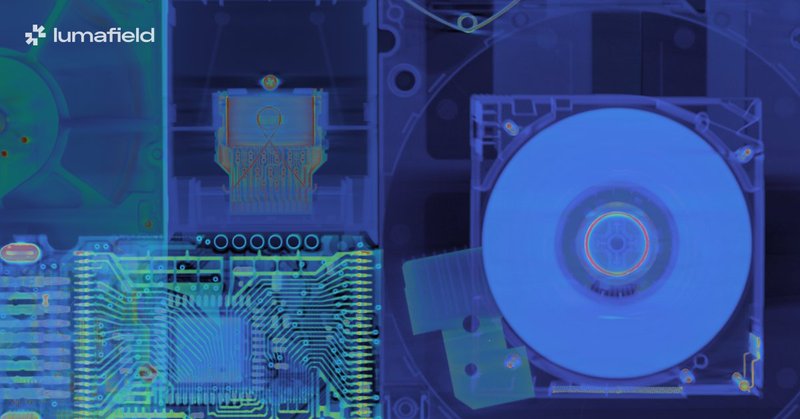
Jon Bruner
@JonBruner
Followers
31K
Following
7K
Media
895
Statuses
6K
Turning atoms into bits at @lumafield. Join our team! https://t.co/8braYCl908
San Francisco, CA
Joined December 2008
What’s inside Apple’s $129 Thunderbolt cable? We CT scanned one to find out, and compared it to some cheaper cables… 🧵
366
3K
21K
@lumafield Computer media week continues here!
Continuing our @lumafield CT scans of computer media with magneto-optical discs! These blend magnetic writing and optical reading. A laser heats a tiny region of the disc to its Curie point and a magnetic field sets the data. MO discs were used until CD-RW caught up.
0
0
1
MO lost its advantage first as CD-RW technology became cheap and reliable, and was fully wiped out by the emergence of portable solid-state storage like USB thumb drives. RIP 🪦. You can explore this scan of a MO disc here! (Plus other bygone media).
lumafield.com
Explore the evolution of storage media with CT scans of magnetic tape, floppies, ROM, and more, revealing the engineering behind how we store data.
0
0
0
Continuing our @lumafield CT scans of computer media with magneto-optical discs! These blend magnetic writing and optical reading. A laser heats a tiny region of the disc to its Curie point and a magnetic field sets the data. MO discs were used until CD-RW caught up.
This is an X-ray CT scan of an Atari 2600 ROM cartridge. In addition to early gaming consoles, this storage format was also used with computers, instruments, and calculators. Let's look inside, and find out why blowing into the connector didn't really help. 🧵
1
0
6
@lumafield Here's the Wednesday installment, featuring @lumafield scans of an Atari ROM cartridge!
This is an X-ray CT scan of an Atari 2600 ROM cartridge. In addition to early gaming consoles, this storage format was also used with computers, instruments, and calculators. Let's look inside, and find out why blowing into the connector didn't really help. 🧵
0
1
1
If you enjoyed these CT scans of floppy disks, check out today's installment, featuring a @lumafield scan of an Atari ROM cartridge:
This is an X-ray CT scan of an Atari 2600 ROM cartridge. In addition to early gaming consoles, this storage format was also used with computers, instruments, and calculators. Let's look inside, and find out why blowing into the connector didn't really help. 🧵
0
1
2
@lumafield And here are some scans of floppy disks:
Continuing our week of data storage CT scans! Floppy disks were once ubiquitous; now they live on only as the familiar "save" icon. First released in 1971, these evolved from 8" to 5¼" to 3½" formats and could store up to 1.44MB of data. Let's look inside. 🧵
2
0
3
@lumafield We're posting @lumafield CT scans of computer media all week. Here's the first installment, on tape storage:
Over the past few decades, computer data has been stored on magnetic film, optical layers, glass platters, and silicon. Every day this week we’ll use @lumafield CT scans to look inside iconic storage formats, see how they work, and watch them evolve into what we use today 🧵
1
0
4
You can explore this @lumafield scan of an Atari 2600 cartridge right here! Come back tomorrow to see a scan of a magneto-optical disk, and on Friday to see scans of hard drives.
lumafield.com
Explore the evolution of storage media with CT scans of magnetic tape, floppies, ROM, and more, revealing the engineering behind how we store data.
1
0
1
@lumafield Check out chapter 2 here, looking at floppy and ZIP disks!
Continuing our week of data storage CT scans! Floppy disks were once ubiquitous; now they live on only as the familiar "save" icon. First released in 1971, these evolved from 8" to 5¼" to 3½" formats and could store up to 1.44MB of data. Let's look inside. 🧵
2
0
8
Floppy tech faded fast after USB drives arrived. We'll talk about those later this week; in the meantime, you can explore our CT scans of ZIP disks here! Come back tomorrow for scans of ROM cartridges—and learn why blowing into them didn't actually help.
lumafield.com
Explore the evolution of storage media with CT scans of magnetic tape, floppies, ROM, and more, revealing the engineering behind how we store data.
1
0
9



